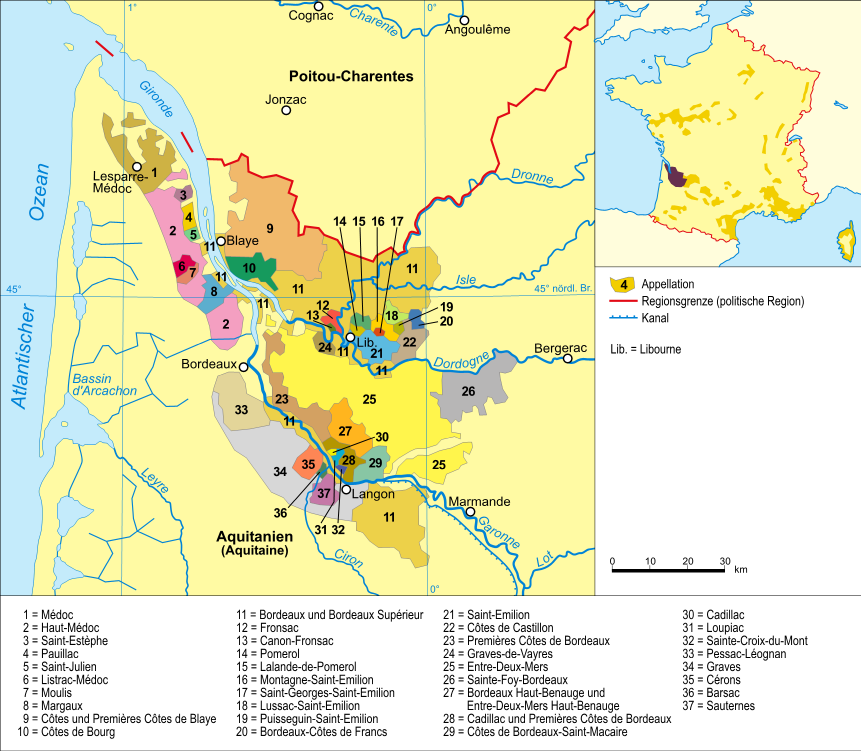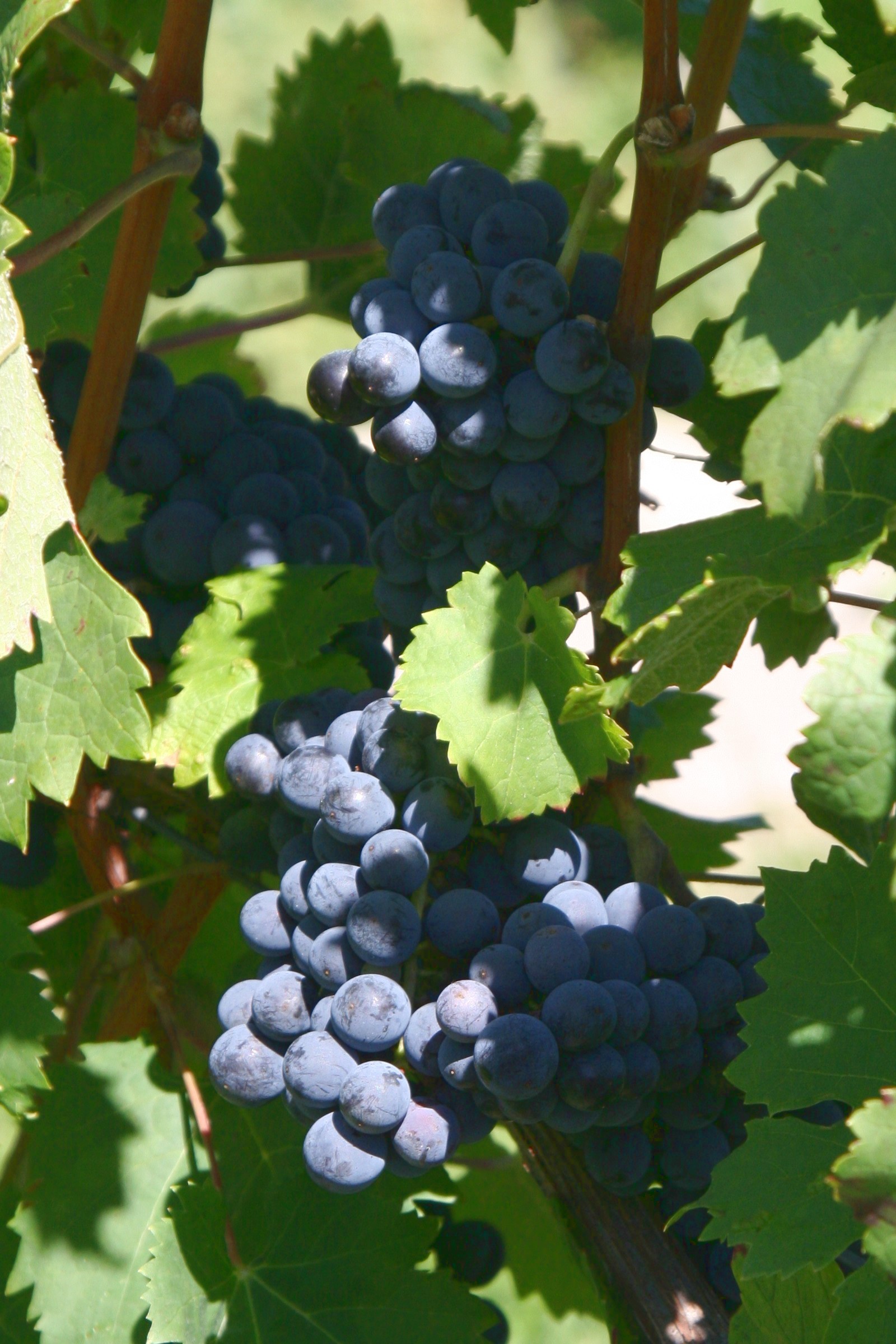|
Château Beauséjour (Duffau-Lagarrosse)
Château Beauséjour, formerly fully titled Château Beauséjour-Duffau-Lagarrosse, is a Bordeaux wine from the appellation Saint-Émilion, ranked ''Premier grand cru classé B'' in the Classification of Saint-Émilion wine. The winery is located in the Right Bank of France's Bordeaux wine region in the commune of Saint-Émilion, in the department Gironde. The estate also produces the second wine Croix de Beauséjour. History Château Beauséjour was once a vineyard cultivated by the monks of the Church of St-Martin during the Middle Ages. It was acquired by the Gerès family in the 17th century, the land then named Peycoucou. By marriage the estate came to the de Carle family, '' seigneurs'' of Figeac, and in 1787 General Jacques de Carle renamed the property to Beauséjour. When the historic estate in its entirety came to Pierre-Paulin Ducarpe, it was divided in 1869 between his two children. The son inherited the half which was sold in 1924 to Dr. Fagouet, altering the name t ... [...More Info...] [...Related Items...] OR: [Wikipedia] [Google] [Baidu] |
Bordeaux Wine
Bordeaux wine (; ) is produced in the Bordeaux region of southwest France, around the city of Bordeaux, on the Garonne River. To the north of the city, the Dordogne River joins the Garonne forming the broad estuary called the Gironde; the Gironde department, with a total vineyard area of 110,800 hectares, is the second largest wine-growing area in France behind the Languedoc-Rousillon. Average vintages produce over 700 million bottles of wine, ranging from large quantities of daily table wine to some of the world's most expensive and prestigious wines. The vast majority of wine produced in Bordeaux is red (sometimes called "claret" in Britain), with sweet white wines (most notably Sauternes), dry whites, and (in much smaller quantities) rosé and sparkling wines ( Crémant de Bordeaux) collectively making up the remainder. Bordeaux wine is made by more than 5,660 producers or ''châteaux''. There are 65 appellations of Bordeaux wine. History Viticulture was introduce ... [...More Info...] [...Related Items...] OR: [Wikipedia] [Google] [Baidu] |
Château Beau-Séjour Bécot
Château Beau-Séjour Bécot, formerly Château Beauséjour-Dr-Fagouet, is a Bordeaux wine from the Appellation d'origine contrôlée, appellation Saint-Émilion AOC, Saint-Émilion, ranked ''Premier grand cru classé B'' in the Classification of Saint-Émilion wine. The winery is located in the Right Bank of France's Bordeaux wine region in the commune of Saint-Émilion, in the department Gironde. The estate also produces the second wine Tournelle de Beau-Séjour Bécot, as well as the ''"Garagistes, Vin de garage"'', La Gomerie. History Once a vineyard cultivated by the monks of the Church of St-Martin during the Middle Ages, in the 17th century it was acquired by the Gerès family, the land then named Peycoucou. By marriage the estate came to the de Carle family, ''Seigneury, seigneurs'' of Château Figeac, Figeac, and in 1787 General Jacques de Carle renamed the property to Beauséjour. When the historic estate in its entirety came to Pierre-Paulin Ducarpe, it was divided in ... [...More Info...] [...Related Items...] OR: [Wikipedia] [Google] [Baidu] |
Cabernet Sauvignon
Cabernet Sauvignon () is one of the world's most widely recognized red wine grape varieties. It is grown in nearly every major wine producing country among a diverse spectrum of climates from Australia and British Columbia, Canada to Lebanon's Beqaa Valley. This grape variety appeared in France in the 17th century as a result of natural crossbreeding. Its popularity is often attributed to its ease of cultivation—the grapes have thick skins and the vines are hardy and naturally low yielding, budding late to avoid frost and resistant to viticulture hazards. The classic profile of Cabernet Sauvignon tends to be full-bodied wines with high tannins and noticeable acidity that contributes to the wine's aging potential. In cool areas, it has flavors of blackcurrant and green pepper; in warmer places, it may taste like black cherry and olive; in very hot climates, it can have a jammy flavor. History and origins For many years, the origin of Cabernet Sauvignon was not cl ... [...More Info...] [...Related Items...] OR: [Wikipedia] [Google] [Baidu] |
Cabernet Franc
Cabernet Franc is one of the major black grape varieties worldwide. It is principally grown for blending with Cabernet Sauvignon and Merlot in the Bordeaux (wine), Bordeaux style, but can also be vinified alone, as in the Loire (wine), Loire's Chinon wine, Chinon. In addition to being used in blends and produced as a varietal in Canada (wine), Canada, Lake Erie AVA, Lake Erie AVA in Pennsylvania, and across the United States (wine), United States and Argentina, it is sometimes made into ice wine in those regions. Cabernet Franc is lighter than Cabernet Sauvignon, making a bright pale red wine that contributes finesse and lends a Black pepper, peppery perfume to blends with more robust grapes. Depending on the growing region and style of wine, additional Aromas (wine), aromas can include tobacco, raspberry, bell pepper, Blackcurrant, cassis, and Viola (plant), violets. Records of Cabernet Franc in Bordeaux go back to the end of the 18th century, although it was planted in Loire ... [...More Info...] [...Related Items...] OR: [Wikipedia] [Google] [Baidu] |
Merlot
Merlot ( ) is a dark-blue-colored wine grape variety that is used as both a blending grape and for varietal wines. The name ''Merlot'' is thought to be a diminutive of , the French name for the blackbird, probably a reference to the color of the grape. Its softness and "fleshiness", combined with its earlier ripening, make Merlot a popular grape for blending with the sterner, later-ripening Cabernet Sauvignon, which tends to be higher in tannin. Along with Cabernet Sauvignon, Cabernet Franc, Malbec, and Petit Verdot, Merlot is one of the primary grapes used in Bordeaux wine, and it is the most widely planted grape in the Bordeaux wine regions. Merlot is also one of the most popular red wine varietals in many markets. This flexibility has helped to make it one of the world's most planted grape varieties. As of 2004, Merlot was estimated to be the third most grown variety at globally.J. Robinson (ed) ''The Oxford Companion to Wine'' Third Edition, Oxford University P ... [...More Info...] [...Related Items...] OR: [Wikipedia] [Google] [Baidu] |
Stéphane Derenoncourt
Stéphane Derenoncourt is a French people, French oenologist, ''vigneron'' working as a consultant for numerous winery, estates in Bordeaux wine, Bordeaux and other wine producers worldwide. With his wife, Christine Derenoncourt, he runs Vignerons Consultants and owns Domaine de l'A in the Côtes de Castillon and Derenoncourt California in Napa Valley AVA, Napa Valley. He is entirely self-taught. Biography Derenoncourt was born in Dunkirk in 1963. The start of his career in viticulture began when he arrived as a hitch-hiker in Fronsac, Gironde, Fronsac in 1982, and worked several harvests before he found employment at Château Fronsac in 1985. After two years working at various vineyards, he began working in the cellar at Château La Fleur Cailleau. In 1990, Derenoncourt was offered a position at the Corre-Macquin family’s cellar at the Château Pavie-Macquin vineyard, and in 1996 was hired as a winemaker by Stephan von Neipperg to his estates, including Château Canon-la-Gaffeli ... [...More Info...] [...Related Items...] OR: [Wikipedia] [Google] [Baidu] |
Michel Rolland
Michel Rolland (born December 24, 1947) is a Bordeaux-based oenologist, with hundreds of clients across 13 countries and influencing wine style around the world. "It is his consultancies outside France that have set him apart from all but a handful of his countrymen." It is frequently addressed that his signature style, which he helps wineries achieve, is fruit-heavy and oak-influenced, a preference shared by influential critic Robert Parker. Rolland owns several properties in Bordeaux, including Château Bertineau Saint-Vincent in Lalande de Pomerol, Château Rolland-Maillet in Saint-Émilion, Château Fontenil in Fronsac, and Château La Grande Clotte in Lussac-Saint-Émilion as well as joint venture partnerships with Bonne Nouvelle in South Africa, Val de Flores in Argentina, Rolland Galarreta in Spain and Yacochuya (Salta) and Clos de los Siete in Argentina. Early life Born into a wine making family in Libourne, Rolland grew up on the family's estate Château Le ... [...More Info...] [...Related Items...] OR: [Wikipedia] [Google] [Baidu] |
Oenologist
Oenology (also enology; ) is the science and study of wine and winemaking. Oenology is distinct from viticulture, which is the science of the growing, cultivation, and harvesting of grapes. The English word oenology derives from the Greek word ''oinos'' ( οἶνος) "wine" and the suffix ''–logia'' ( -λογία) the "study of". An oenologist is an expert in the science of wine and of the arts and techniques for making wine. Education and training University programs in oenology and viticulture usually feature a concentration in science for the degree of Bachelor of Science (B.S, B.Sc., Sc.B), and as a terminal master's degree — either in a scientific or in a research program for the degree of Master of Science (M.S., Sc.M.), e.g. the master of professional studies degree. Oenologists and viticulturalists with doctorates often have a background in horticulture, plant physiology, and microbiology. Related to oenology are the professional titles of ''sommelier'' and master ... [...More Info...] [...Related Items...] OR: [Wikipedia] [Google] [Baidu] |
Château Pavie Macquin
A château (, ; plural: châteaux) is a manor house, or palace, or residence of the lord of the manor, or a fine country house of nobility or gentry, with or without fortifications, originally, and still most frequently, in French-speaking regions. Nowadays, a ''château'' may be any stately residence built in a French style; the term is additionally often used for a winegrower's estate, especially in the Bordeaux wine regions, Bordeaux region of France. Definition The word château is a French word that has entered the English language, where its meaning is more specific than it is in French. The French word ''château'' denotes buildings as diverse as a medieval fortress, a Renaissance palace and a fine 19th-century country house. Care should therefore be taken when translating the French word ''château'' into English, noting the nature of the building in question. Most French châteaux are "palaces" or fine "English country house, country houses" rather than "castles", an ... [...More Info...] [...Related Items...] OR: [Wikipedia] [Google] [Baidu] |


